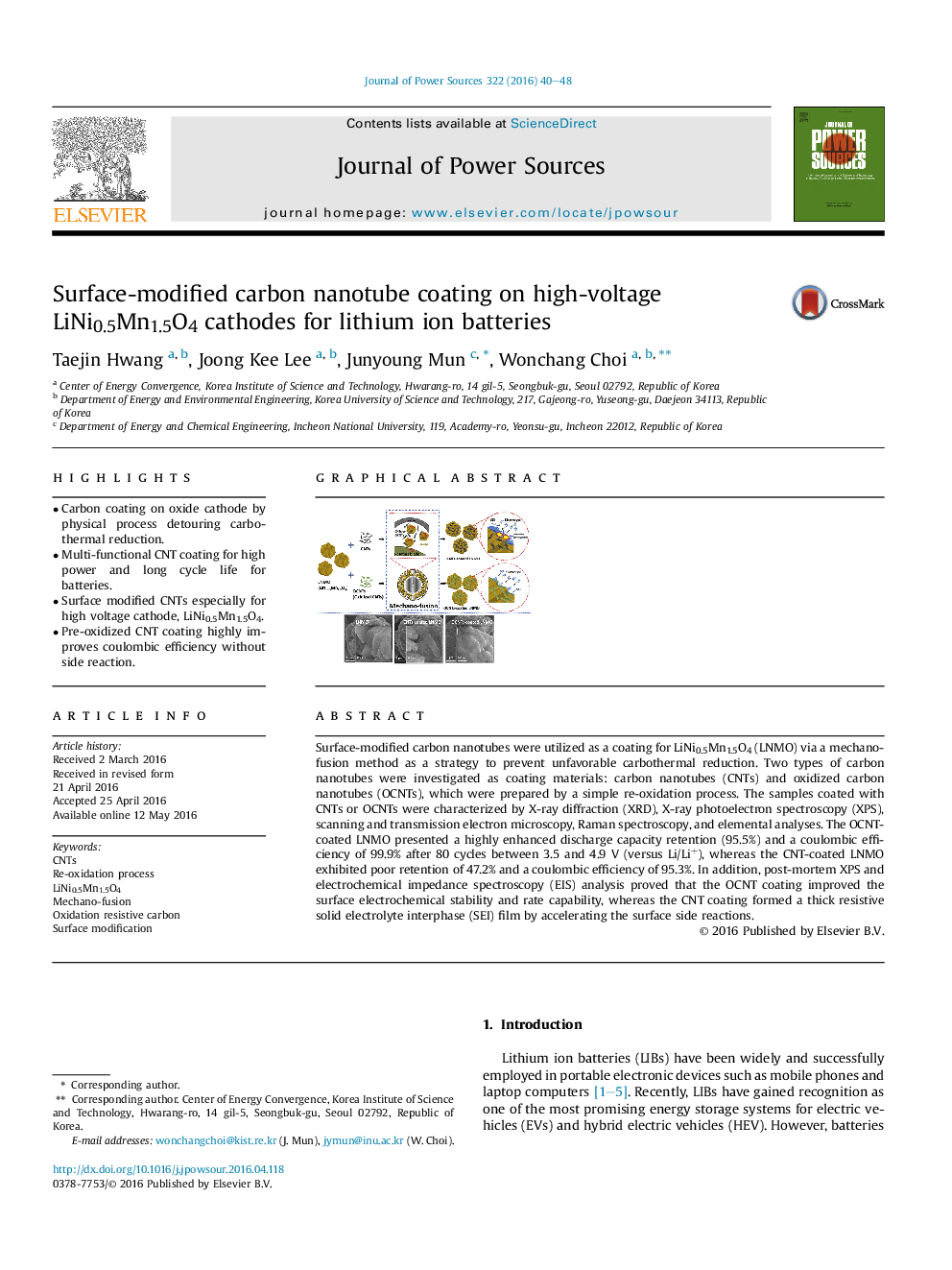| Article ID | Journal | Published Year | Pages | File Type |
|---|---|---|---|---|
| 1283565 | Journal of Power Sources | 2016 | 9 Pages |
•Carbon coating on oxide cathode by physical process detouring carbothermal reduction.•Multi-functional CNT coating for high power and long cycle life for batteries.•Surface modified CNTs especially for high voltage cathode, LiNi0.5Mn1.5O4.•Pre-oxidized CNT coating highly improves coulombic efficiency without side reaction.
Surface-modified carbon nanotubes were utilized as a coating for LiNi0.5Mn1.5O4 (LNMO) via a mechano-fusion method as a strategy to prevent unfavorable carbothermal reduction. Two types of carbon nanotubes were investigated as coating materials: carbon nanotubes (CNTs) and oxidized carbon nanotubes (OCNTs), which were prepared by a simple re-oxidation process. The samples coated with CNTs or OCNTs were characterized by X-ray diffraction (XRD), X-ray photoelectron spectroscopy (XPS), scanning and transmission electron microscopy, Raman spectroscopy, and elemental analyses. The OCNT-coated LNMO presented a highly enhanced discharge capacity retention (95.5%) and a coulombic efficiency of 99.9% after 80 cycles between 3.5 and 4.9 V (versus Li/Li+), whereas the CNT-coated LNMO exhibited poor retention of 47.2% and a coulombic efficiency of 95.3%. In addition, post-mortem XPS and electrochemical impedance spectroscopy (EIS) analysis proved that the OCNT coating improved the surface electrochemical stability and rate capability, whereas the CNT coating formed a thick resistive solid electrolyte interphase (SEI) film by accelerating the surface side reactions.
Graphical abstractFigure optionsDownload full-size imageDownload as PowerPoint slide
